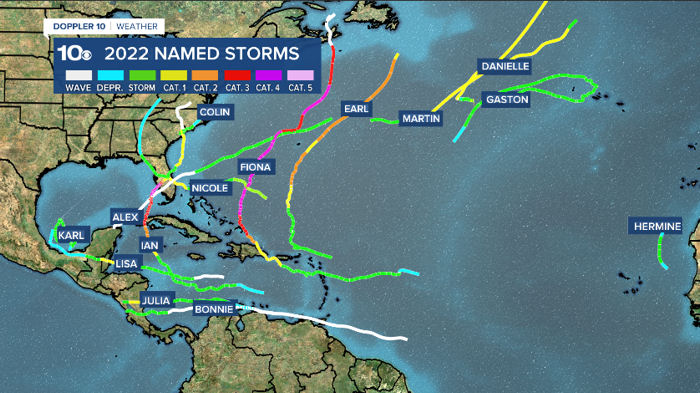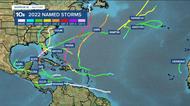Tropical Cyclone Attribution - ORIGINAL CONTENT
- By:
- Edward A. Reid Jr.
- Posted On:
- Feb 14, 2023 at 7:00 AM
- Category
- Climate Change
Tropical cyclones (hurricanes in the Atlantic and Northeast Pacific basins and typhoons in the Pacific and Indian Ocean basins) are weather events which involve wind, rain, thunderstorms and storm surge and can trigger tornadoes. The Saffir-Simpson Hurricane Wind Scale rates tropical cyclones based on their maximum sustained wind speed. Storms are rated in categories 1-5 based on maximum wind speed range, which is associated with the extent of expected damage to infrastructure in the path of the storms.
Each tropical cyclone is unique because of the myriad of weather conditions each storm encounters throughout its duration. Each storm begins as a tropical depression which might or might not develop into a tropical storm, which then might or might not develop into a tropical cyclone. In the current satellite era, each tropical depression is identified and tracked throughout its duration.
The intense global focus on climate change and its potential effects on weather events such as tropical cyclones, tornadoes, floods, droughts and heat waves has led to the development of climate model-based attribution studies which attempt to identify the extent to which climate change might have affected the frequency, intensity and other characteristics of weather events. These attribution studies have recently evolved into attempts at “instant attribution”, which permits estimates of potential climate change affects on severe weather events to be reported while the weather event is still in the news and fresh in the public’s minds.
The attribution studies for tropical cyclones focus on storm frequency, intensity, speed, associated rainfall and track. One recent example is the attribution of a 10% increase in rainfall associated with Hurricane Ian. This attribution was based on analysis of those characteristics for similar storms in the past. However, our limited understanding suggests that these attributions are premature.
While the focus of attribution studies has been on the damage caused by tropical cyclones, there has been little focus on other potential attribution issues related to tropical cyclones. These issues include whether climate change has any impact on the frequency and timing of the formation of tropical depressions, or the frequency with which tropical depressions develop into tropical storms and tropical storms develop into tropical cyclones. There has also been little focus on the potential affects of climate change on the paths of tropical cyclones or the frequency with which tropical cyclones dissipate at sea.
The 2022 hurricane season is a case in point. The map below shows the tracks of all named tropical storms in the Atlantic Basin in 2022. The season was originally predicted to be above average, but was nearly average on most metrics, though accumulated cyclone energy was significantly lower.

The media predictably focused on the loss of life and financial damage caused by Hurricane Ian. However, Ian’s track and potential landfall location were predicted accurately well in advance of landfall, allowing ample time to secure properties and evacuate. The financial damage, while major, was consistent with historical norms on a GDP adjusted basis, because of the continuing construction of expensive infrastructure in areas subject to hurricane landfalls.


